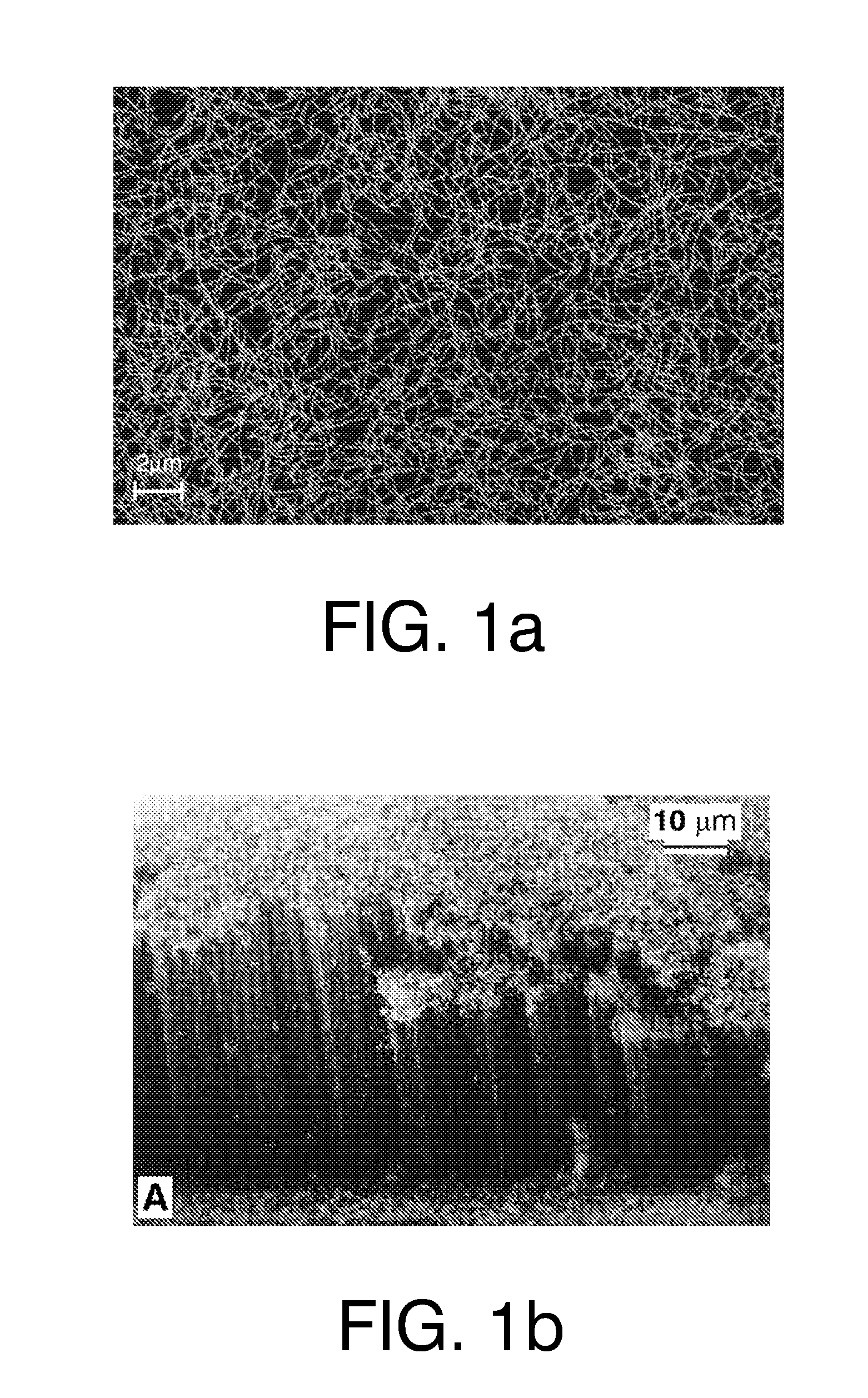Electrodes selective for solid-contact ions based on carbon nanotubes
a carbon nanotube and electrode technology, applied in the field of electrochemistry, can solve the problems of not being suitable for certain applications, and nobody has used cnts as transducers in potentiometric analysis
- Summary
- Abstract
- Description
- Claims
- Application Information
AI Technical Summary
Problems solved by technology
Method used
Image
Examples
example 1
Preparation of an all-Solid-Contact ISE to Analyse Potassium with a Transducer Layer of Single-Walled Carbon Nanotubes and a Potassium Ion-Selective Membrane
[0070]For the sensing layer, a potassium ion-selective membrane which contains valinomycin as the ionophore was used. The potassium-selective membrane used was constructed according to the procedure described in the scientific literature (L Y Heng and E A. H. Hall, ACA 403 (2000) 77-89, “Methacrylic-acrylic polymers in ion-selective membranes: achieving the right polymer recipe”) and contained 1.6% wt (20.1 mmol kg−1) of valinomycin, 0.5% wt (5.1 mmol kg−1) of a lipophylic anion (potassium tetrakis (4-chlorophenyl) borate) (KTCIPB) and 97.9% wt monomer of methyl methacrylate-dimethyl methacrylate, MMA-DMA. 200 mg of this mixture was dissolved into 2 ml of dichloromethane. To prepare the electrodes, a suspension of 1% wt of single-walled carbon nanotubes (SWCNT) in dodecyl sulfate was sprayed in the form of an aerosol (Furtado et...
example 2
Analysis of the Concentration of Potassium Ions Using the all-Solid-Contact ISE Prepared in Example 1
[0071]The electrical potentials were measured at room temperature (22° C.) with continuous agitation. The reference electrode used was a double-junction electrode of Ag / AgCl / 3M KCl (Methrom AG model 6.0729.100) containing a solution of LiAcO 1M as a saline bridge. The experiments were conducted in 100 ml glass beakers pre-treated overnight with a solution of HNO3 10−4M. All the electromotive force (EMF) values measured were corrected for the values of the liquid junction potentials measured by the Henderson equation. The activity coefficients were calculated using the Debye-Huckel approximation. An electrometer (Keithley 6514) with high impedance input was used to measure the electromotive force.
Results and Discussion
Limit of Detection
[0072]The electromotive force or EMF (voltage at zero current) of the all-solid-contact ISE prepared in example 1 was measured at various concentration...
example 3
Preparation of an all-Solid-Contact ISE to Analyse Thrombin with a Transducer Layer of Single-Walled Carbon Nanotubes and a Sensing Layer Formed by Aptamers Covalently Bonded to the Nanotubes
[0084]For the sensing layer, aptamers covalently bonded to the carbon nanotubes of the transducer layer were used. Specifically, we used the selective aptamer of 15 bases (GGTTGGTGTGGTTGG) for the α-thrombin represented in FIG. 8. In said FIG. 8, it is also possible to observe both the sequence of the basic units and the spatial arrangement and the point through which the aptamer is covalently bonded to the single-walled carbon nanotube.
[0085]To manufacture this electrode, the following procedure was adopted:
1. Purification of the SWCNTs following the procedure of Furtado et al. (Furtado et al., 2004, supra) through treatment with HNO3 2.6 M for 4 h to reflux.
2. A layer of the carboxylated nanotubes (groups —COOH were entered in stage 1 by acid treatment) over a cylindrical type non-conducting P...
PUM
 Login to View More
Login to View More Abstract
Description
Claims
Application Information
 Login to View More
Login to View More - R&D
- Intellectual Property
- Life Sciences
- Materials
- Tech Scout
- Unparalleled Data Quality
- Higher Quality Content
- 60% Fewer Hallucinations
Browse by: Latest US Patents, China's latest patents, Technical Efficacy Thesaurus, Application Domain, Technology Topic, Popular Technical Reports.
© 2025 PatSnap. All rights reserved.Legal|Privacy policy|Modern Slavery Act Transparency Statement|Sitemap|About US| Contact US: help@patsnap.com



